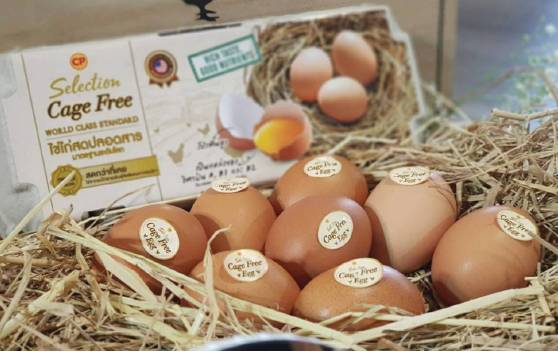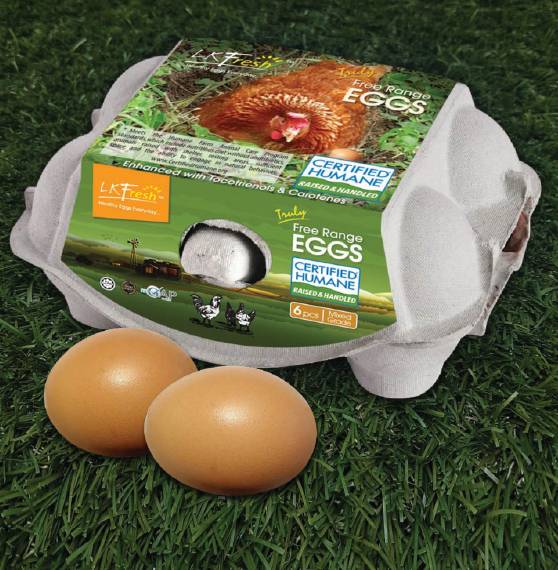Asia witnesses gradual transition to cage-free egg production
As more retail, foodservice and F&B companies commit to cage-free eggs, producers need technical assistance to help with this transition, writes ARIEF FACHRUDIN.
Pan-Asian retailer Dairy Farm recently set out to improve the welfare of laying hens across Asia and help its customers understand the benefits of cage-free eggs. The chain plans to launch its Meadows-brand cage-free eggs in Hong Kong and Singapore soon. Since the eggs will be price at 20% lower than the local average for cage-free brands, consumers could switch from conventional eggs minus a leap in price. Along with this plan, its Ikea restaurants in Hong Kong and Taiwan will also introduce cage-free eggs by end this year. Ian McLeod, Dairy Farm’s Chief Executive, said: “The two initiatives demonstrate our commitment to helping improve the supply chain for layers” Helping Dairy Farm implement this is Humane Society International, an animal protection organization that has been helping Tesco in Malaysia and Thailand to make the transition to ethically sourced eggs. Dairy Farm and Tesco have joined Accor, Hyatt Hotels, Marriott, Sodexo, Compass Group and Nestlé, and Asian industry leaders such as The Lo & Behold Group, Privé and SaladStop! in promoting cage-free eggs. This endorses that growing demand in Asia is not purely driven by consumers who are aware about animal welfare. Rather it is being pushed by retail and foodservice chains and F&B firms. This demand attracts local and international suppliers to fill the gaps. Among them are CP Foods, Betagro, San Miguel Corporation and Bounty Fresh in Southeast Asia. Thailand to lead
CP Foods supplies its cage-free eggs to a large number of franchises, restaurants, supermarkets and hotel chains in Thailand.
Seeing how consumers and food service businesses are becoming more conscious of ethical food production, CP Foods aimed to grow cage-free egg production to 10 million by end 2020.
It has committed to gradually transitioning to best practices in cagefree production to ensure laying hens live happy, disease-free loves that improve the quality of egg products.
Its cage-free facility was opened in Saraburi province in 2018 as a closed-house pilot farm with a controlled environment that guarantees high biosecurity levels.
The farm complies with welfare and antibiotics standards that preclude hunger, thirst, discomfort, pain and injury.
The chicken house has a low stocking density of seven hens per square meter, compared with standards in the US and EU that demand a maximum nine hens. This low-density farming allows chickens to move and express their natural behavior while benefiting from environmental enrichment, such as perches, to reduce stress.
CP Foods has supported Thailand’s Department of Livestock Development (DLD) in developing new standards on cage-free farming. It has offered the DLD a draft of the new standard to raise quality and acceptance of these eggs locally. The department is now encouraging layer farmers in Thailand to adopt the new standard.
Commenting on this move, Nicolas Farrugio, Regional Business Manager of German poultry equipment manufacturer Salmet, told Asian Poultry Magazine: “Being a leader in aviary and cage-free production systems, we support farmers as they switch from conventional to cage-free production.”
First cruelty-free farm
In Malaysia, free-range hens still only occupy a small portion of Liang Kee Farming’s 300,000 eggs-per-day operation.
But earlier last year, it became the first layer farm in Southeast Asia to have its eggs certified as cruelty-free by Humane Farm Animal Care, an American non-profit organization.
Managing Director Tan Leng Yee said: “I started to explore the cage-free system first as a personal experiment and for my own family’s consumption.
“Then schoolchildren came to visit our farm and I realized that their feedback was positive. People said our eggs tasted better and the chickens seemed to be healthier and happier.”
Mr Tan told Asian Poultry Magazine that he will expand free-range farming once new barns and coops are built. “I have set aside 30-acres and can raise up to 100,000 hens. My current certified humane population is much smaller.”
Training centers
Cage-free egg production, however, can be complex, and raises a number of animal welfare issues if hens are not managed well, said Jayasimha Nuggehalli, COO of Global Food Partners (GFP), a Singapore supplychain consulting firm.
“A crucial aspect of improving animal welfare is enhancing farmers’ knowledge of best practices, and providing them with training to do this themselves. Layer hen management is highly complex, with many factors involved in good management and high welfare standards,” Mr Nuggehalli explained to Asian Poultry Magazine.
“Farmers need hands-on, technical and localized guidance and expertise to carry out the transition. Without it, there is a real risk that they will not be equipped to comply, and that businesses will not fulfil their commitments, and minimal tangible progress will be made to improve onfarm welfare.”
To effectively support the Asian egg industry during this transition and assist with capacity-building, GFP is teaming up with industry leaders to establish cage-free training centers in China and Indonesia, the world’s largest and seventh largest egg producers, respectively. The two centers expect to be fully operational by end 2021.
GFP and Aeres University of Applied Sciences of the Netherlands agreed to establish a training center and a model cage-free egg farm in Indonesia last May. This facility will comply with best practices and welfare accreditation scheme standards, such as HFAC standards.
Egg producers from the region will be able to visit the model farm so they can witness a local and relevant model at work. This may be used to undertake non-invasive research projects, such as on bird behavior, environmental enrichment and egg marketing.
Experts from GFP, Aeres and technical experts from different segments, such as poultry genetics, lighting, feed and equipment, will conduct training in the latest developments in their subject areas. In addition, students will be given guest lectures and offered farm visits.
Mr Nuggehalli said the combination will build confidence and prepare students to effectively establish, manage, operate, consult on and audit higher welfare egg farms. GFP and Aeres will assist in training and placement for students into internships and jobs.
“The training center will be a major benefit to the poultry industry in Asia to enhance skills and knowledge about higher welfare egg production and management practices,” he said.
The China center will also function similarly by providing practical training and serve as a model farm.
Hesitancy
It seems that the transition to cage-free eggs in Indonesia may take longer since farmers there are still hesitant. Although disposable income is increasing in the country, they believe consumers’ awareness of animal welfare is still low, leading to a longstanding preference for regular eggs.
A Greater Jakarta egg producer told Asian Poultry Magazine that cage-free eggs are gaining ground in developed countries, where consumers are willing to pay ethically-produced eggs.
“In Indonesia, who will buy them? If there is a supermarket chain that wants to source cage-free eggs, how big will demand be? Is it worth the investment?” he said with skepticism.
He believes that cage-free eggs are no better than conventional eggs. “In the cage-free system, hens lay their eggs on the floor, so the eggs will be dirty from feces,” he said.
But in the end, transitioning to cage-free will be the farmer’s choice. “If the farmer sees profits, why not. For me, I will stick with the cage system,” he added.
Another layer farmer based in West Java said he had no interest in cage-free production. “When animal welfare organizations promote the system, it’s actually about money. If we want to transition, certification will cost us,” he told Asian Poultry Magazine.
“In addition, there is a per-piece fee, for cage-free eggs we sell to the market developed by the organizations. If we sell to other markets, these organizations will blacklist us,” he added. A P




